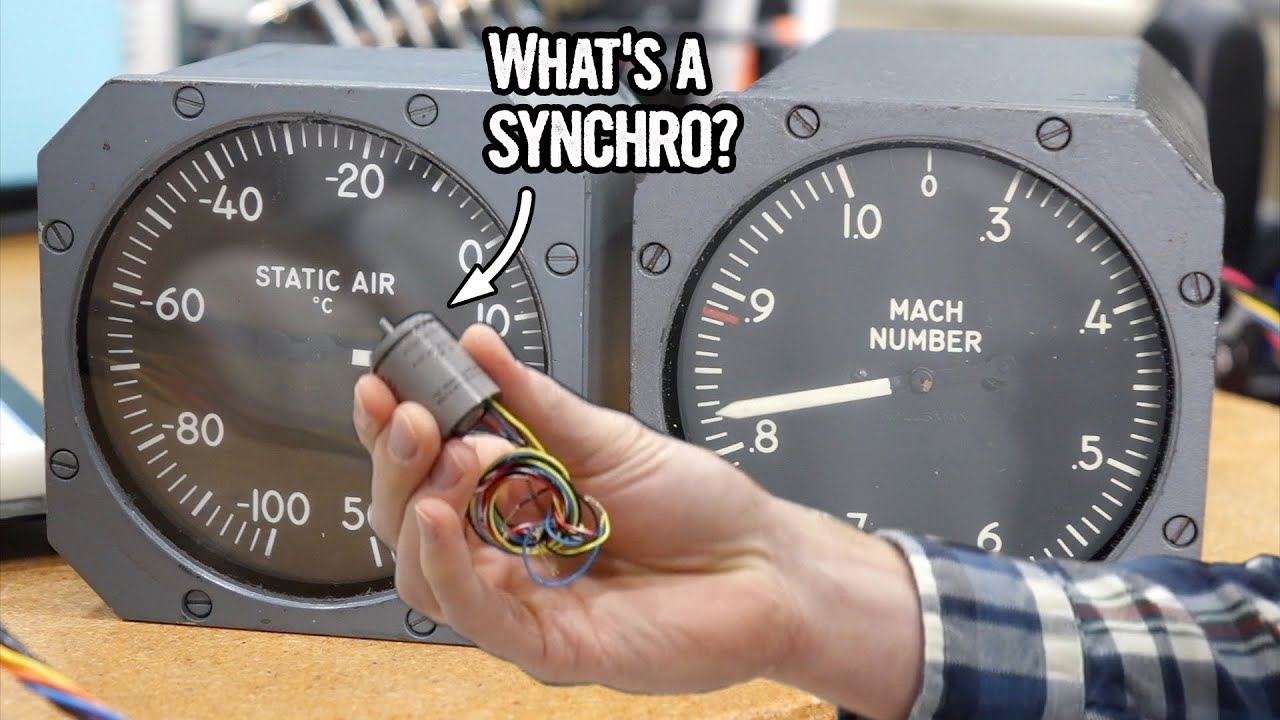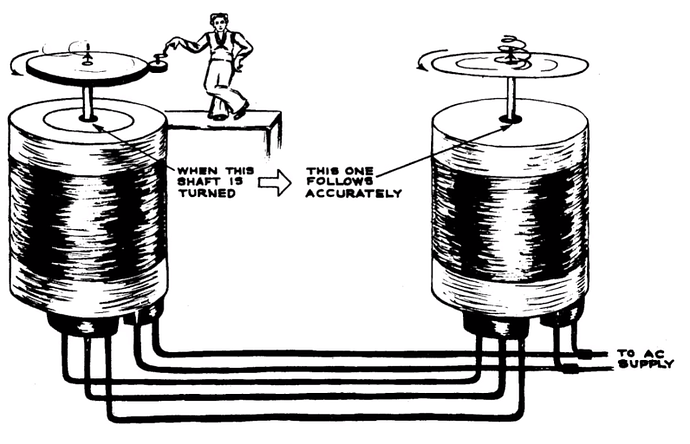Synchros (which we all called “selsyns” when I was a larval engineer, but which was apparently a brand name that morphed into a generic term) are about as close to magic as any electromechanical device you’re likely to encounter. With two synchros, connected to one another by five wires, and powered from an AC supply on two of them, when you rotate the shaft on one, the other will precisely track its angular position.
There are no electronics involved at all—it’s just coils, iron, and wires. And it’s completely symmetrical: you can rotate either shaft. and the one at the other end will follow faithfully. (In practice, synchros are often dedicated to transmitter and receiver functions, with the receiver able to deliver more torque to its load, but the operation is still symmetric.) How do they do that? As with many magic tricks, it all seems so simple once you look behind the curtain.
The air data computer used synchros internally to transmit analogue values encoded as rotation within the computer, and synchros to send the calculated results to instruments on the pilot’s control panel, where the pointers on the dials were simply attached to synchros that mirrored those inside the computer. Synchros were also widely used on naval ships for transmitting aiming information from mechanical fire control computers to gun turrets and steering information from the wheel on the bridge to rudder actuators.
Today, these functions are typically performed with digital shaft encoders and servo actuators, but some aircraft applications still use synchros because they are simple, extremely rugged, and there’s little that can break in them.

